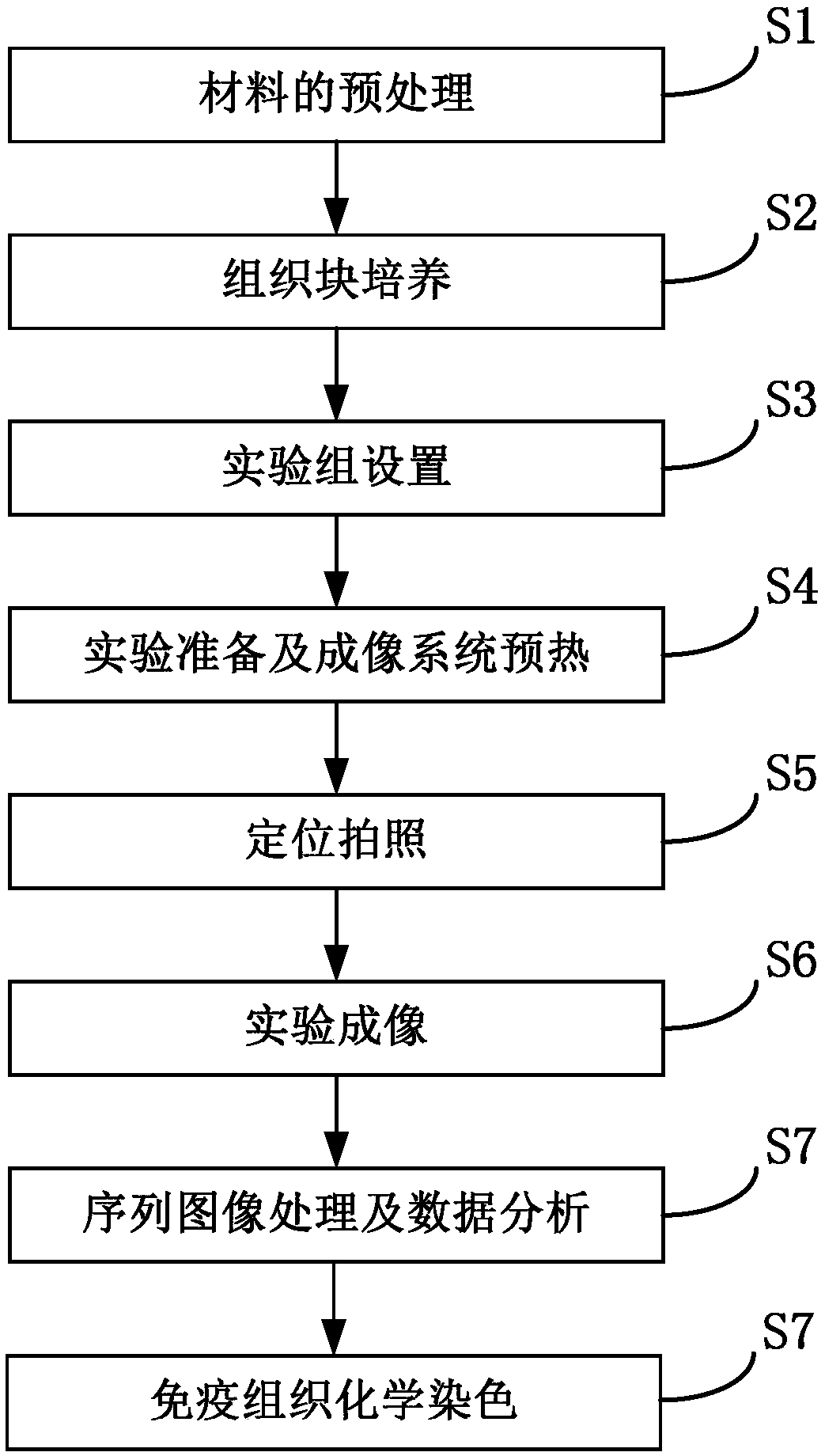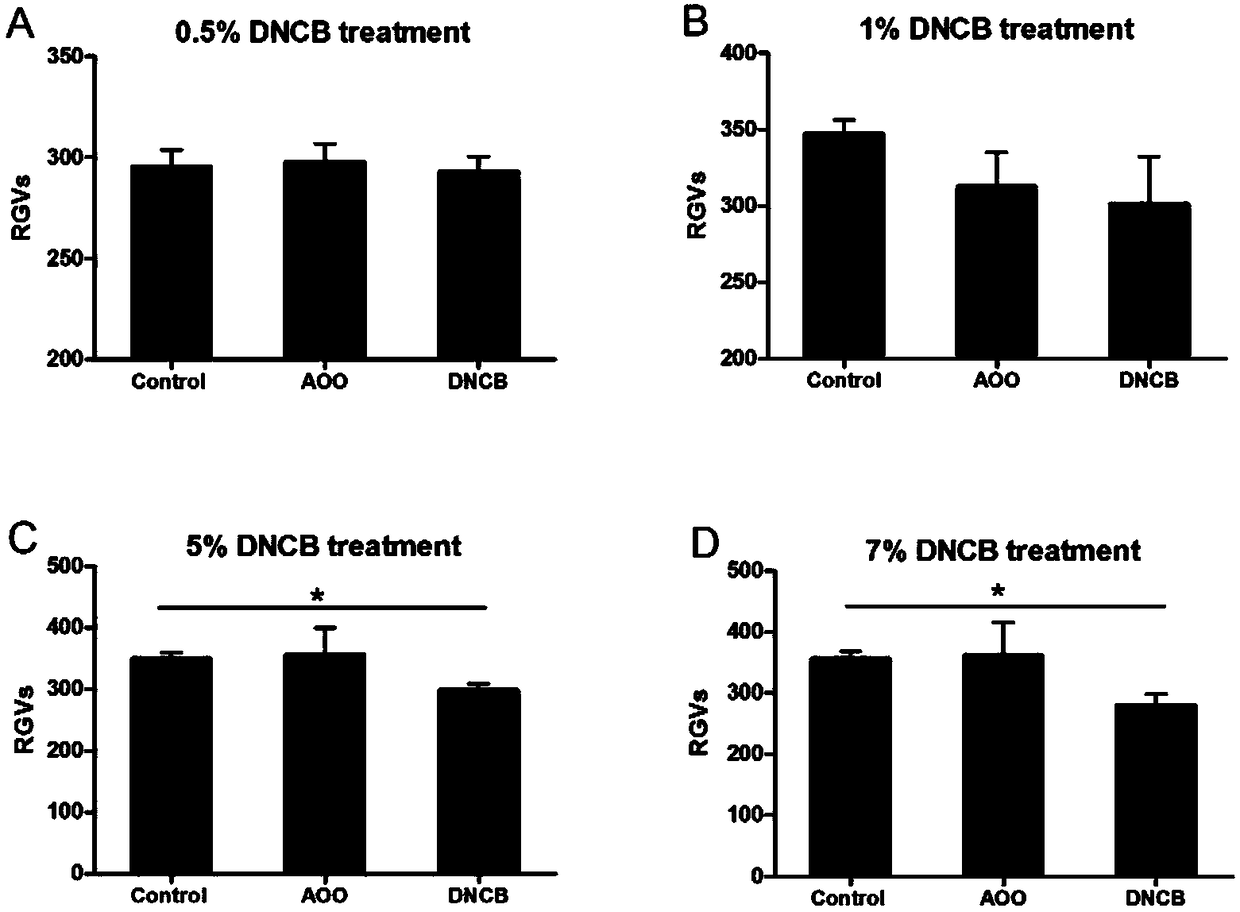Method for detecting sensitization of cosmetics components by ultra-weak biophoton imaging system
A technology of biophotonics and imaging systems, which is applied in the direction of material analysis, test sample preparation, and measuring devices through optical means, which can solve the problems of time-consuming, high cost, and large individual differences among volunteers, and achieve simple and fast operation Effect
- Summary
- Abstract
- Description
- Claims
- Application Information
AI Technical Summary
Problems solved by technology
Method used
Image
Examples
Embodiment
[0047] Example: Ultra-weak biophoton imaging system detects cosmetic allergies
[0048] 1. Experimental materials:
[0049] Human skin tissue, from the Chinese Brain Bank Center (CBBC)
[0050] 2. Experimental steps
[0051] S1, the pretreatment of material, comprises the following steps:
[0052] S11. Retrieve the skin on the back of the forearm from the donated body provided by the Red Cross, and use a scalpel and a sharp blade to remove the subcutaneous fat in a large petri dish filled with a large amount of PBS buffer, leaving only the dermis and epidermis as much as possible .
[0053] S12. After removing the fat, cut the tissue into multiple 0.5×0.5cm tissue blocks, put them in antifreeze solution and infiltrate them in a -4°C refrigerator, and then divide the infiltrated tissue blocks into 2.0ml decanters Spin round bottom cryovials and store in liquid nitrogen at -80°C.
[0054] S2, tissue block culture, comprising the following steps:
[0055] S21. Take out the ...
PUM
 Login to View More
Login to View More Abstract
Description
Claims
Application Information
 Login to View More
Login to View More - R&D
- Intellectual Property
- Life Sciences
- Materials
- Tech Scout
- Unparalleled Data Quality
- Higher Quality Content
- 60% Fewer Hallucinations
Browse by: Latest US Patents, China's latest patents, Technical Efficacy Thesaurus, Application Domain, Technology Topic, Popular Technical Reports.
© 2025 PatSnap. All rights reserved.Legal|Privacy policy|Modern Slavery Act Transparency Statement|Sitemap|About US| Contact US: help@patsnap.com



